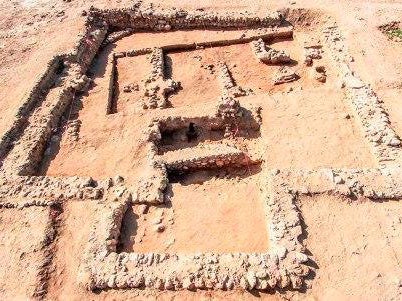Sodom and Gomorrah: The quest to find the biblical cities

In 1847, a 16-member expedition set off from New York for the Holy Land. Led by Lt. William Lynch, they carried with them months of supplies, weapons, two corrugated-steel rowboats and sanction from the U.S. Navy to conduct an expedition down the Jordan River to the Dead Sea.
Their goal was both scientific and religious: to chart the elevation of this vast, salty lake in the middle of the desert and to locate the ruins of the infamous biblical cities of Sodom and Gomorrah.
With permission granted from the Ottoman sultan in Istanbul and Arab dignitaries accompanying them, the expedition proceeded on camel-back toward the river. Lynch was pleased with his procession, as he wrote in his journal in 1848: "The metal boats, with flags flying, mounted on carriages drawn by huge camels, ourselves, the mounted sailors in single file, the sherîf and the sheik with their tufted spears and followers, presented a glorious sight."
The Lynch expedition took measurements of the Dead Sea's depth, gathered water samples, and documented the flora and fauna of the region. According to a recent account of the journey, while Lynch found no ruins, he did come away convinced that the lands around the Dead Sea were the site of the biblical "cities of the plain" -- and the tremendous fiery cataclysm that supposedly destroyed their notorious dens of sin some 4,000 years ago.
"There can scarcely be a doubt that the whole Jordan Valley has sunk from some extraordinary convulsion; preceded, most probably, by an eruption of fire," Lynch wrote.
He was hardly the last explorer to puzzle over the actual locations of mythical Sodom and Gomorrah. In the decades since, numerous scholars, researchers and biblical historians have combed parts of Israel and Jordan in search of evidence of these cities.
By the 1970s, archaeologists had unearthed traces of Bronze Age settlements to the east of the Dead Sea. In 1975, digs in Syria found cuneiform tables that supposedly referred to the existence of a city known as Sodom, or something like that -- though not all scholars agreed.
Most recently, American archaeologist Steven Collins has for the past decade been conducting work at a site in Jordan known as Tall el-Hammam. In an interview last month with Popular Archaeology, he detailed the result of 10 years of excavations.
"What we've got on our hands is a major city-state that was, for all practical purposes, unknown to scholars before we started," he told the magazine. And Collins is somewhat convinced that this could be the historical Sodom. From Popular Archaeology:
Indeed, according to Collins, when comparing it with the remains of other nearby ancient cities, along with its prime location and dates of occupation, it emerges today as the best candidate for the lost city of Sodom -- the infamous city that, based on the Biblical account, was destroyed by God in a fiery cataclysm because of its iniquity.
"Tall el-Hammam seemed to match every Sodom criterion demanded by the text," he says.
The excavations have revealed a large, complex urban center, with fortifications, palaces and buildings likely used for administrative governance.
"When we explored the area, the choice of Tall el-Hammam as the site of Sodom was virtually a no-brainer since it was at least five to 10 times larger than all the other Bronze Age sites in the entire region," Collins says. "It was a huge undertaking, requiring millions of bricks and, obviously, large numbers of laborers."
Of course, while the reality of this city is not in doubt, there is little evidence that it's actually biblical Sodom. Skeptics and geologists seek other answers that have little to do with proving religious scripture right or wrong. What evidence is there of a great natural disaster? And what did these very ancient cities mean to those living in the later kingdoms of Judea?
Israel Finkelstein, an archaeologist at Tel Aviv University, offers this suggestion to Israeli daily Haaretz: "We are probably dealing here with an etiological story, that is, a legend that developed in order to explain a landmark. In other words, people who lived in the later phase of the Iron Age, the later days of the kingdom of Judah, were familiar with the huge ruins of the Early Bronze cities and told a story of how such important places could be destroyed."
According to Popular Archaeology, Collins is searching for more signs of how life in the city may have come to an abrupt end. The answers he may find will likely raise many more questions.
Subscribe to Independent Premium to bookmark this article
Want to bookmark your favourite articles and stories to read or reference later? Start your Independent Premium subscription today.

Join our commenting forum
Join thought-provoking conversations, follow other Independent readers and see their replies